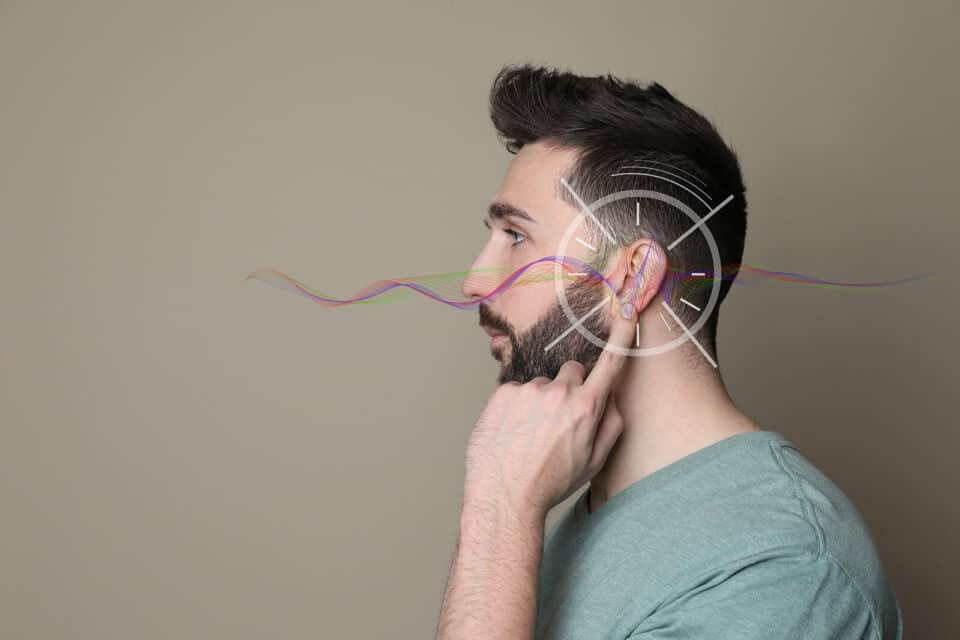Did you know that hearing loss is the third most common medical condition that people experience today? Over 48 million people have some degree of hearing loss, exceeding rates of cancer and diabetes. Though hearing loss is pervasive, it still remains widely undertreated. In fact, only a third of people who could benefit from treatment, actually receive it. Learning more about hearing loss can increase your understanding and help you prioritize your hearing health and wellness.
There are 3 types of hearing loss: sensorineural, conductive, and mixed. Conductive hearing loss occurs in the outer or middle portion of the ear and is usually temporary. Whereas sensorineural hearing loss happens in the inner ear and is permanent. Sensorineural hearing loss is by far the most common type of hearing loss, accounting for 90% of the hearing loss that people experience today.
Causes
Sensorineural hearing loss is caused when sensory cells in the inner ear are damaged. There are thousands of these cells in the cochlea and they play a major role in how sound is processed. They receive incoming soundwaves and convert them into electrical signals. These signals are then sent to the brain where they continue to be processed, this includes the brain assigning meaning to these signals which is how we understand what we hear. A few common ways that sensory cells can be damaged and cause sensorineural hearing loss include:
- Aging: aging is one of the strongest indicators of hearing loss. This means that the risk of developing age related hearing loss, also known as presbycusis, increases with age. According to the National Institute on Deafness and Other Communication Disorders (NIDCD):
- 1 in 3 adults, ages 65-74, have some degree of hearing loss
- 1 in 2 adults, ages 75 and older have disabling hearing loss
Age related hearing loss can be caused by a few factors: changes that may happen to the ears over time, the cumulative toll of loud noise exposure, and existing medical conditions which are linked to hearing loss and also impact older adults disproportionately.
- Loud noise: another common cause of sensorineural hearing loss is loud noise exposure. One time or consistent exposure to loud noise can desensitize and weaken the sensory cells in the inner ear. Over 30 million people are regularly exposed to hazardous noise levels that can impact hearing health. Common sources of loud noise exposure include noisy work environments, listening to music at loud levels, social settings etc.
- Medical conditions: studies show that a number of medical conditions can increase the risk of developing hearing loss. This includes heart disease, diabetes, hypertension, and osteoporosis.
Additional causes of sensorineural hearing loss include: autoimmune conditions, inner ear disorders, chronic ear infections, ototoxic medications, and head injuries.
Symptoms
Sensorineural hearing loss usually occurs over time and this gradual process can mean that people overlook (or may not notice) symptoms for quite some time. Common symptoms include the following:
- Tinnitus: a ringing or buzzing like noise in one or both ears that only you can hear.
- Sounds become muffled or distorted.
- Hearing speech when there is background noise is challenging.
- Having to lip read to help identify individual words.
- Pretending to hear to get through a conversation.
- Turning up the volume on the TV and/or other electronic devices.
- Moving to a quieter environment to be able to hear more clearly.
- Hearing better in one ear compared to the other.
- Missing words or parts of a conversation.
- Keeping conversations as short as possible.
- Feeling drained or tired after conversations and social interactions.
- Finding yourself saying “huh” or “what” in response to others.
These symptoms can be mild to more profound, making it too tough to hear and navigate communication. Over time, this can impact relationships and social life as well as health and wellness. Extensive research shows that hearing loss can increase a number of health risks like cognitive decline and depressive symptoms.
Diagnosing and Treating Sensorineural Hearing Loss
Though sensorineural hearing loss is not curable, there are effective ways it is treated. The first step is diagnosing this type of hearing loss which involves getting your hearing health comprehensively evaluated by a specialist. This testing process is non-invasive and painless and consists of measuring your hearing capacity in both ears. Once your hearing needs in each ear are identified, treatment is tailored to meet those needs. Hearing aids are the most common treatment and these electronic devices transform hearing health.
Contact us today to learn more about sensorineural hearing loss and to schedule an appointment for a hearing consultation.

